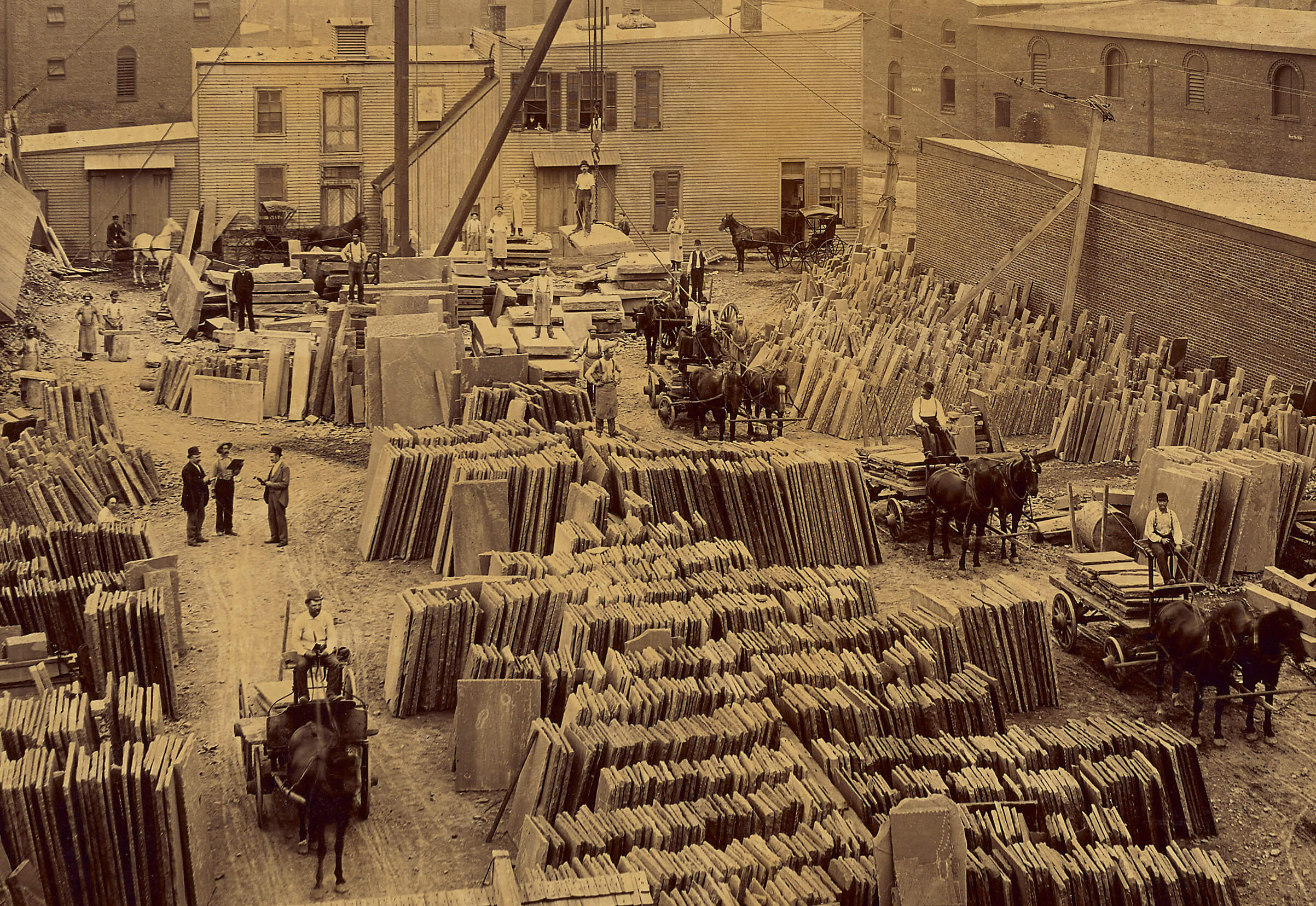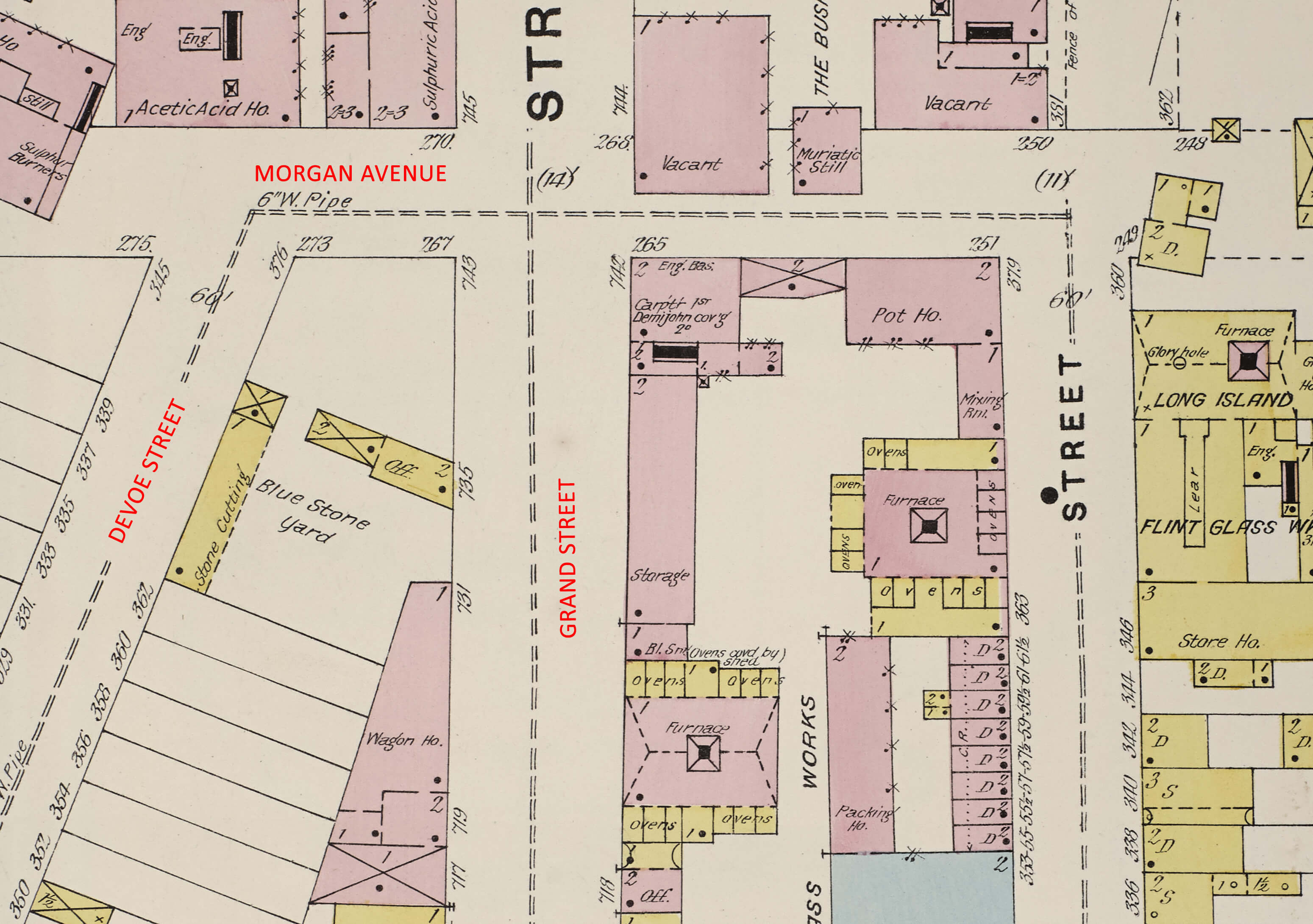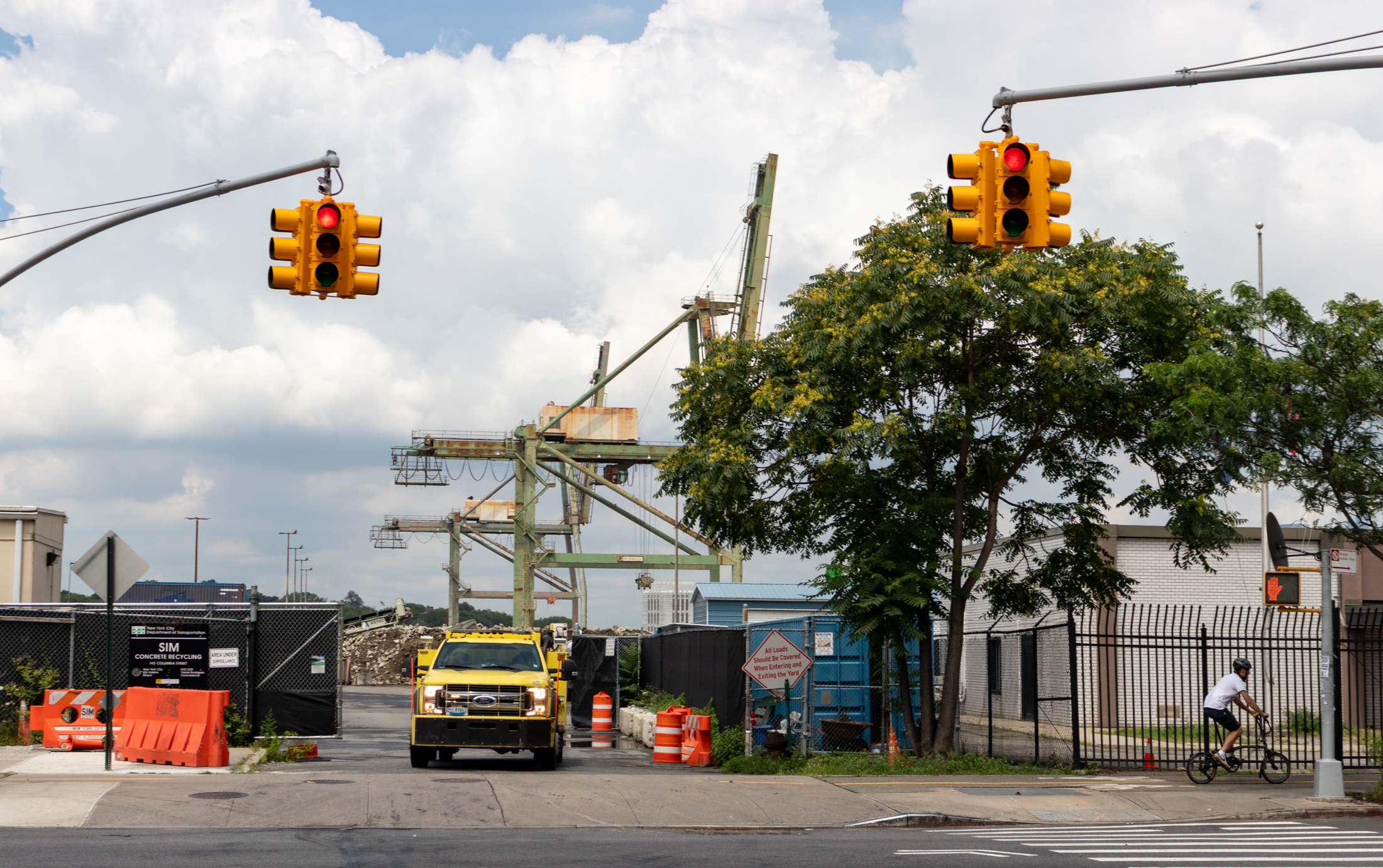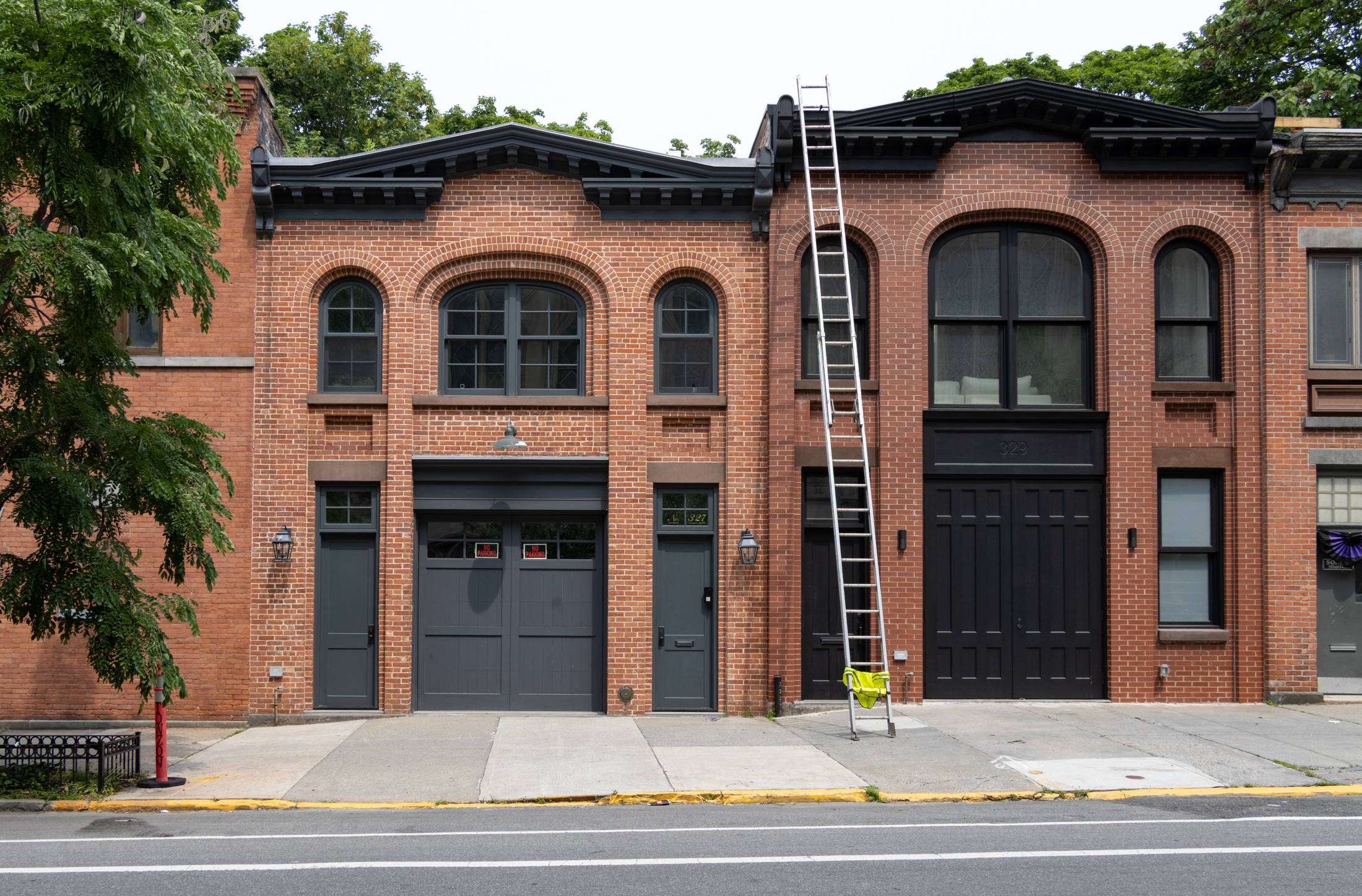Selling Bluestone in 19th Century Brooklyn: the Stone Yard of Christian F. Hommel
Workers in aprons are scattered amongst and even on top of slabs of stone and horses are at the ready to deliver heavy loads, all paused in action for an unknown photographer to capture the grand scope of a Brooklyn stone yard in the 19th century.

Christian F. Hommel’s stone yard circa 1880-1890 by an unknown photographer. Photo via the Getty’s Open Content Program
Workers in aprons are scattered amongst and even on top of slabs of stone, and horses are at the ready to deliver heavy loads, all paused in action for an unknown photographer to capture the grand scope of a Brooklyn stone yard in the 19th century.
While the photographer behind the circa 1880-1890 image in the collection of the J. Paul Getty Museum is unknown, the owner of the stone yard is identified as that of one Christian F. Hommel.
Stone yards, which finished the rough stone imported from quarries outside the city, were an important part of the Brooklyn building industry in the 19th century. In an 1884 publication by local historian Henry Reed Stiles, the author calculated that there were 92 marble and stone works in the borough at the time. Of those, 35 were stone yards dealing with building, flagging and paving stone while the remaining were marble and granite works focused on stones for monuments and markers.

While Stiles didn’t rate Christian F. Hommel’s yard among the largest operating at the time, he did include it on a list, noting that it was located on Grand Street. A location that matches is included on a handwritten note on the photograph.
Records, including city directories and newspaper accounts, have Hommel operating his own stone business by at least 1876. The location of it is variously noted as Metropolitan and Grand or merely Newtown Creek, but from 1879 forward the business is usually recorded as a bluestone yard on Grand Street at the corner of Morgan Avenue.
A Sanborn map of 1888 shows a bluestone yard at that intersection with an office facing Grand Street and a one-story, wood-frame structure for stone cutting stretching along Devoe Street at the rear of the parcel — closely aligning with the buildings seen in the photograph. The full map plate shows the stone yard in the midst of an area of heavy industry, with a chemical works, glass works and a rope walk all located nearby. Just a few blocks away was the industrial hub of Newtown Creek.

The photograph gives a glimpse into one stone yard’s operation, a hint at the workforce needed, and the amount of stone it was providing for the building of Brooklyn. The high level of detail in the albumen silver print, produced from a glass plate negative, allows even a glimpse inside the open door of the wood-frame office. Seemingly carefully posed within the photograph is a group of three men, two of them more formally be-suited. Perhaps Hommel himself captured in the shot that was showing off his enterprise?
His career would be cut short by his death in 1893 at age 44. His business continued, with Ellen C. Hommel, his widow, partnering with employee James H. Harnden to continue on as Hommel & Harnden. Ads for the company show a continued focus on bluestone for sidewalks, curbs, lintels, sills and other construction-related uses, with mentions of North River bluestone, from Hommel and Harnden’s native Ulster County, as well as Wyoming Valley and Warsaw bluestones.

In 1905 the business was renamed the James H. Harnden Company and operated from the same location, finally appearing in city directories with the full address of 991 Grand Street. After the death of Harnden in 1914, the stone yard stayed in business until at least the mid 1920s.
Today, there doesn’t seem to be any evidence of Hommel’s former stone yard on the block. A low scale brick garage sits where the office once stood and the rest of the site is similarly filled. Hommel’s customer list remains largely unknown but chances are there are some pieces of bluestone from his yard still in place on the streets of Brooklyn.
Related Stories
- Watch Sheep Stroll Through Prospect Park in a Rare Newsreel From the 1920s
- Look Out for the Apple: A Sign From the Past Pops Up in Downtown Brooklyn
- A Human Fly Once Inched Up the Soldiers’ and Sailors’ Memorial Arch
Sign up for amNY’s COVID-19 newsletter to stay up to date on the latest coronavirus news throughout New York City. Email tips@brownstoner.com with further comments, questions or tips. Follow Brownstoner on Twitter and Instagram, and like us on Facebook.





What's Your Take? Leave a Comment